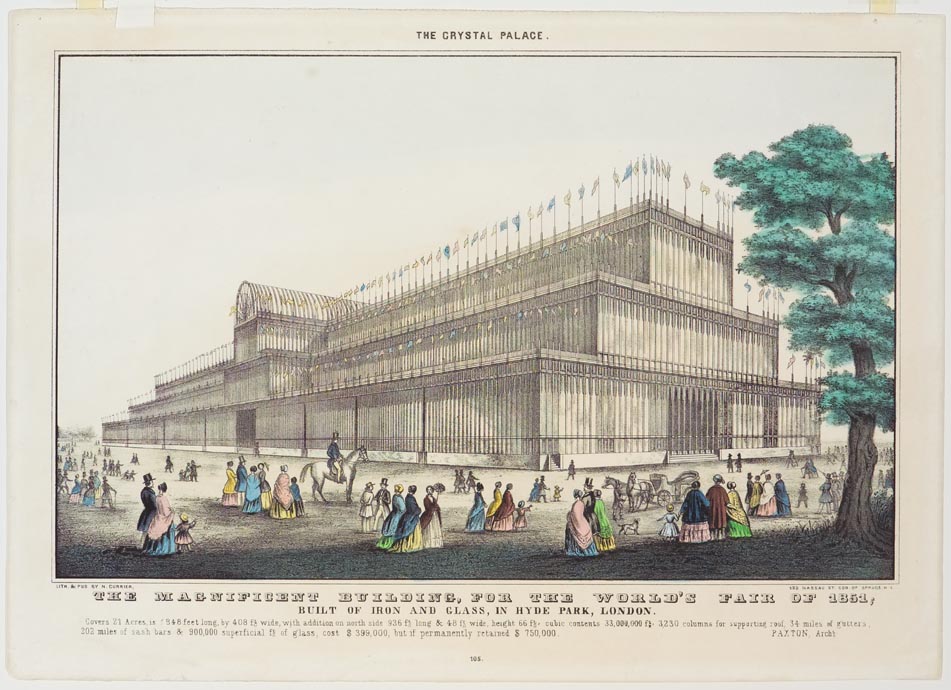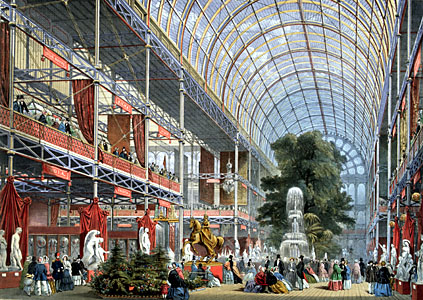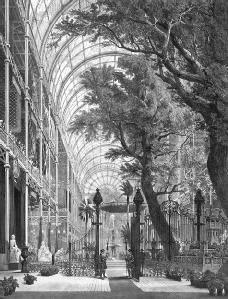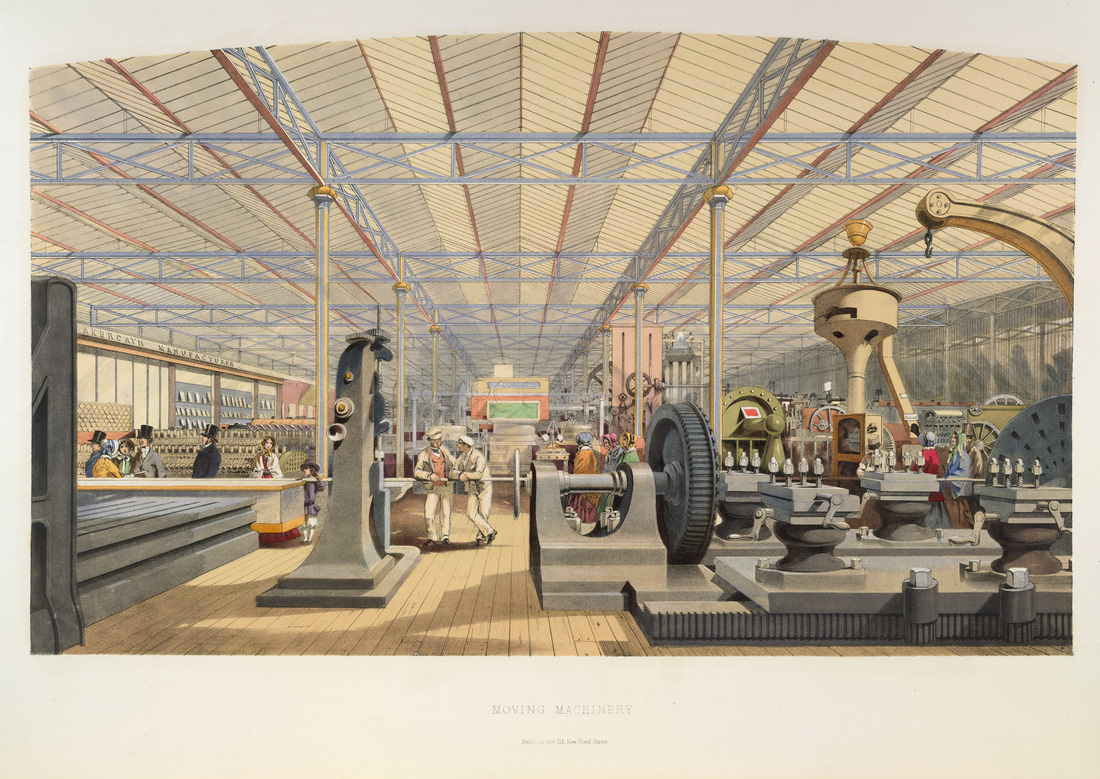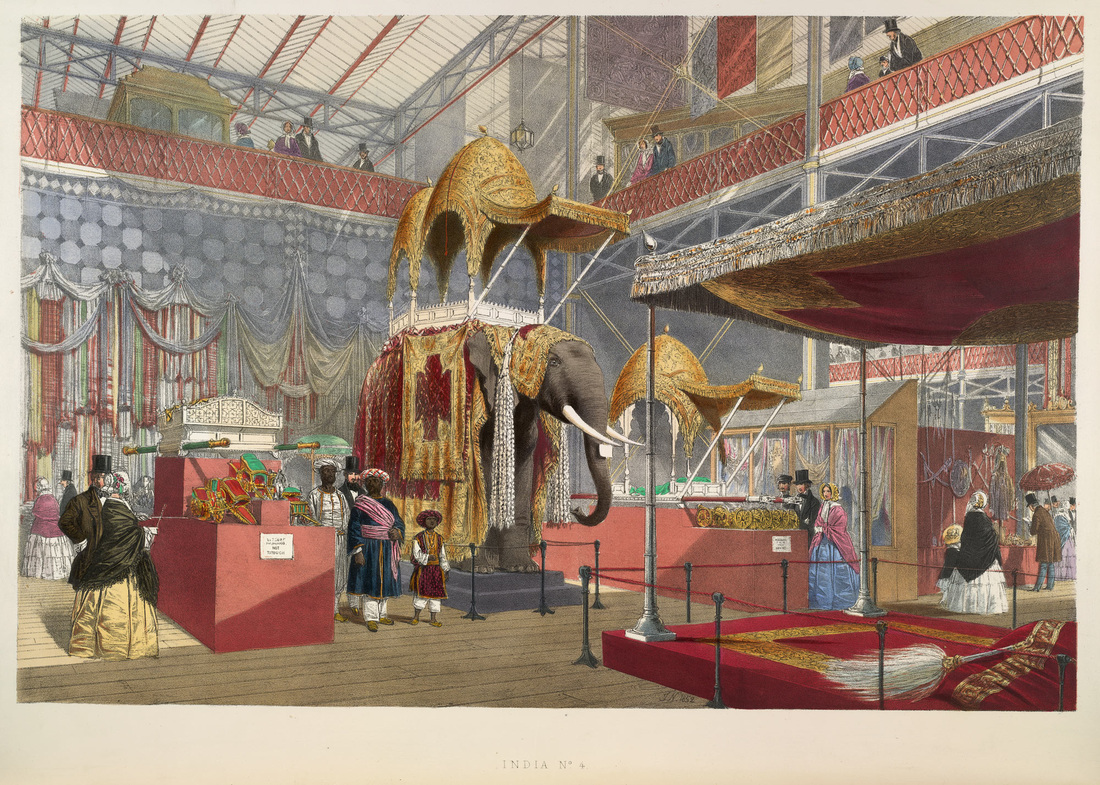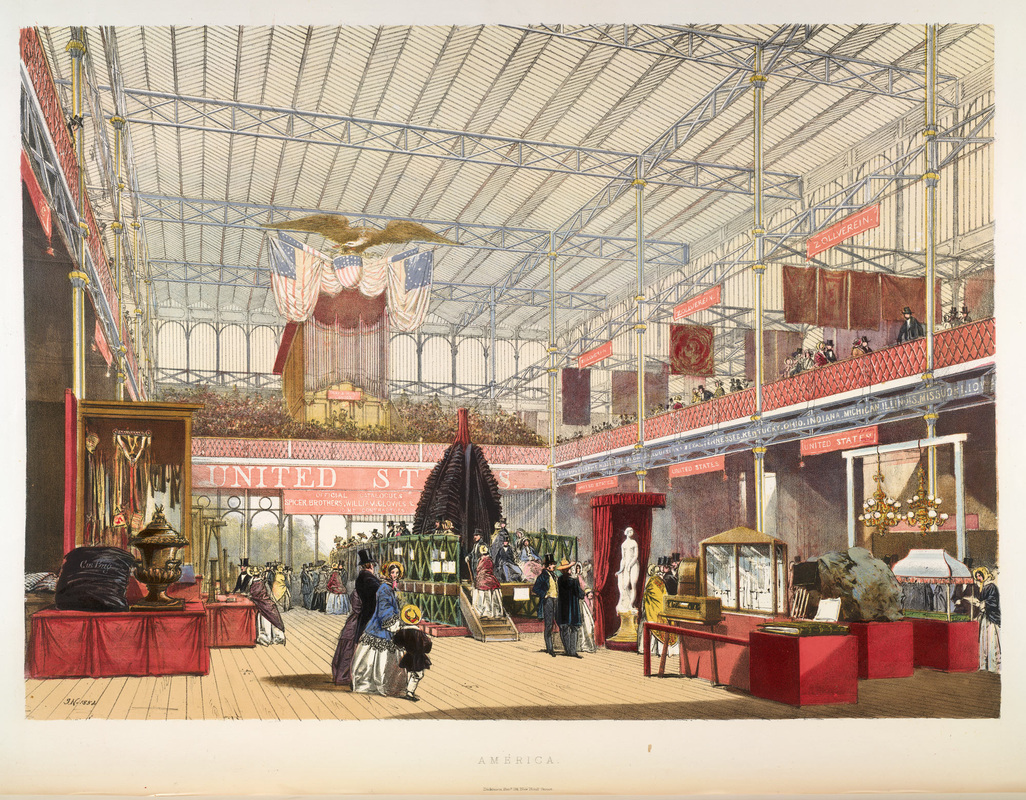London Exposition
May 1st, 1851 to October 15, 1851
"Its grandeur does not consist in one thing, but in the unique assemblage of all things. Whatever human industry has created you find here." (Charlotte Brontë, letter of 1851)
The fair was named the Great Exhibition of the Works of Industry of All Nations serving as a self-congratulatory celebration of Britain's confidence in its industrial might.
|
"Over 233 designs were submitted for the building to house the "Great Exhibition of the Works of All Nations." Joseph Paxton produced his design for a Crystal Palace on a piece of blotting paper, then submitted the final design in less than 9 days. The building itself was erected in just six months, a remarkable building with 293,655 panes of glass, 330 huge iron columns, and 24 miles of gutters.
The building featured the largest roof ever made, and stood out in London architecture. To complement the mass of glass, the building was decorated in red, green, and blue, and the iron columns were variegated with yellow stripes." (park.org) |
It had 100,000 exhibits from Britain and 38 other countries including France, the United States, Russia, Turkey and Egypt with exhibits in four main categories - Raw Materials, Machinery, Manufacturers and Fine Arts.
|
"There were some 100,000 objects, displayed along more than 10 miles, by over 15,000 contributors. Britain, as host, occupied half the display space inside, with exhibits from the home country and the Empire. The biggest of all was the massive hydraulic press that had lifted the metal tubes of a bridge at Bangor invented by Stevenson. Each tube weighed 1,144 tons yet the press was operated by just one man." (British Library) |
|
"Canada sent a fire-engine with painted panels showing Canadian scenes, and a trophy of furs. India contributed an elaborate throne of carved ivory, a coat embroidered with pearls, emeralds and rubies, and a magnificent howdah and trappings for a rajah’s elephant." (British Library) |
|
"The American display was headed by a massive eagle, wings outstretched, holding a drapery of the Stars and Stripes, all poised over one of the organs scattered throughout the building. Although the general idea of the Exhibition was the promotion of world peace, Colt’s repeating fire-arms featured prominently, but so did McCormick’s reaping machine. The exhibit that attracted most attention had to be Hiram Power’s statue of a Greek Slave, in white marble, housed in her own little red velvet tent, wearing nothing but a small piece of chain." (British Library) |
